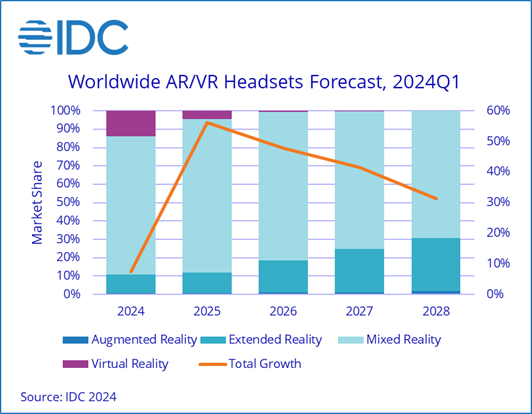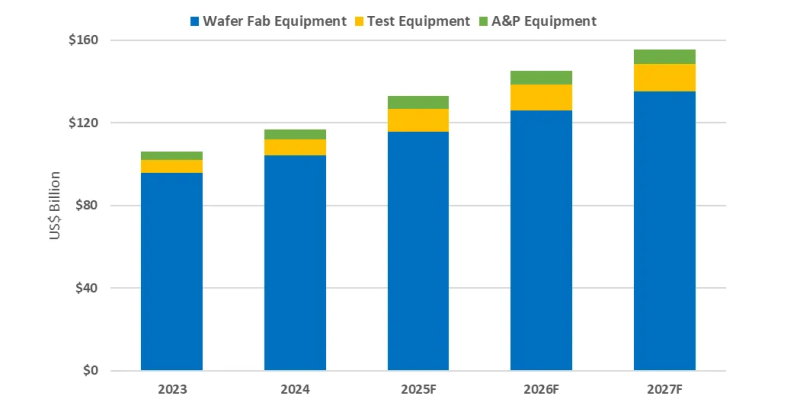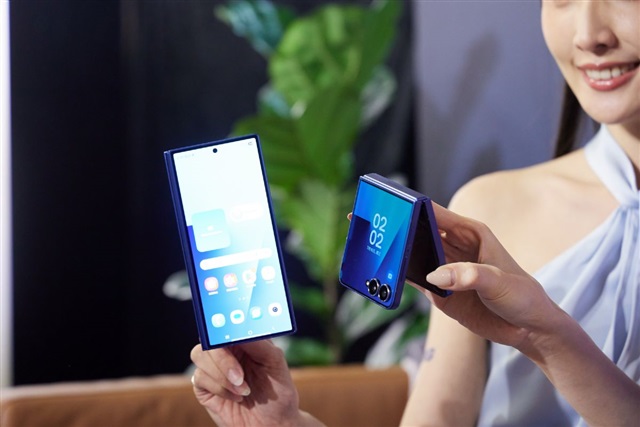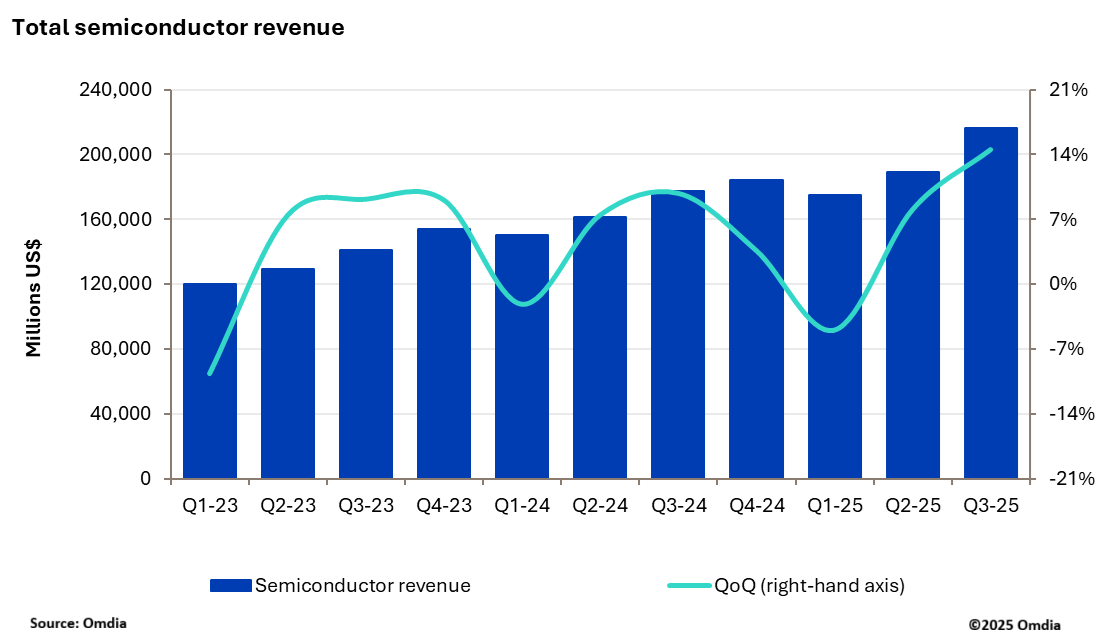Q1-shipments of augmented reality and virtual reality (AR/VR) headsets declined 67.4% y-o-y, says IDC
The decline in shipments was expected as the market transitions to include new categories – Mixed Reality (MR) which occludes the user’s vision but provides a view of the real world with outward-facing cameras, and Extended Reality which employs a see-though display but mirrors content from another device or offers a simplistic heads-up display.
The ASP rose to over $1000 as Apple entered the market and incumbents such as Meta focused on premium headsets such as the Quest 3.
Meta again led the market in 1Q24 in terms of share, while Apple’s recent entry into the market enabled it to capture the second position.
ByteDance, Xreal, and HTC rounded out the top 5. Both the Quest 3 and the Vision Pro helped educate users and enticed developers to create mixed reality content, blending the digital and physical worlds. Unfortunately, this has come at a premium for users.
IDC forecasts headset shipments will return to growth later this year with volume growing 7.5% over 2023.
Newer headsets and lower price points will help with the turnaround expected later this year. Beyond that, headset shipment volume is expected to see a CAGR of 43.9% from 2024–2028.

Stay up to date with the latest in industry offers by subscribing us. Our newsletter is your key to receiving expert tips.

Worldwide semiconductor equipment sales are projected to grow 13.7 percent in 2025, reaching a record 133 billion dollars, Semi announced at Semicon Japan. This momentum is expected to continue throug

The smartphone industry is facing considerable cost challenges in 2026 amid ongoing memory supply shortages and rising prices. This situation is expected to lead to a 1.6% decrease in annual shipments

New research from Omdia shows that the semiconductor market delivered a record breaking performance in 3Q25 with industry revenue reaching $216.3bn, up 14.5% quarter-over-quarter (QoQ). This marks the